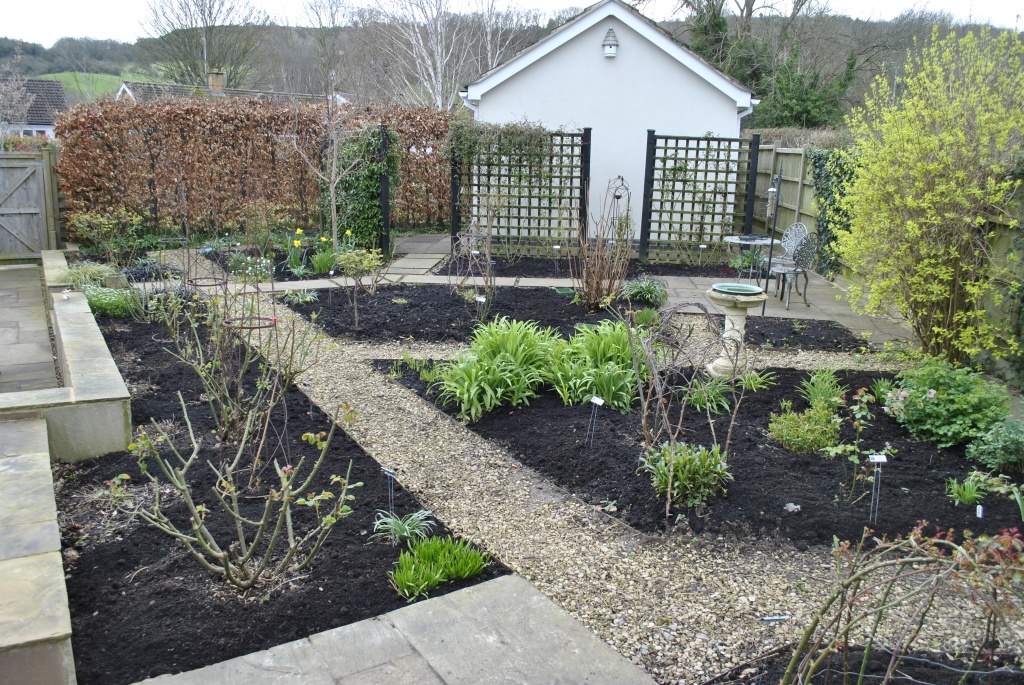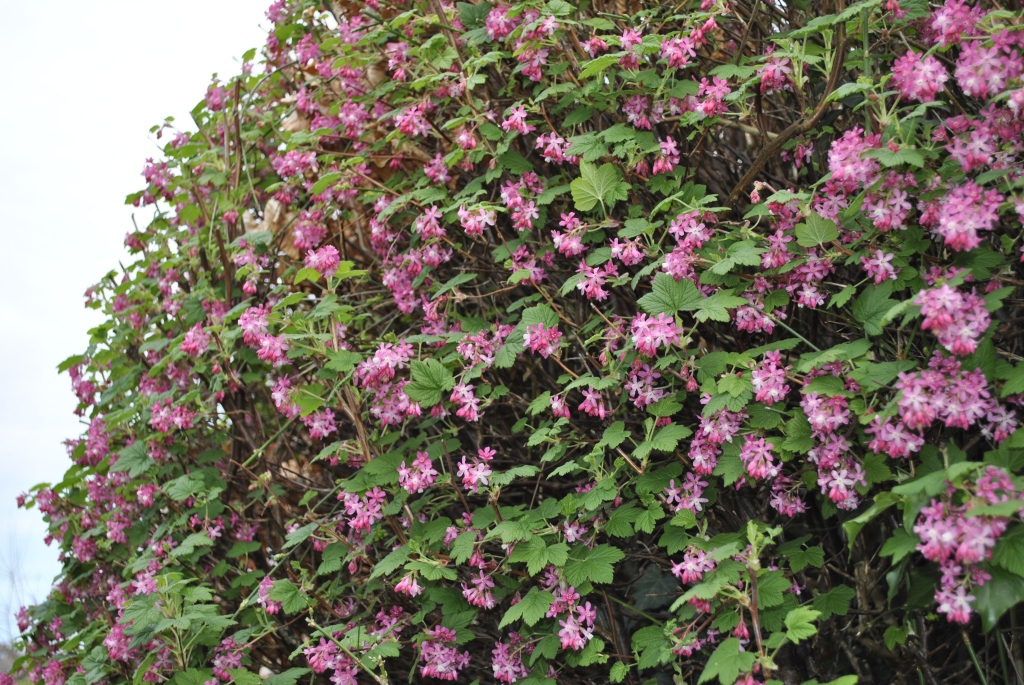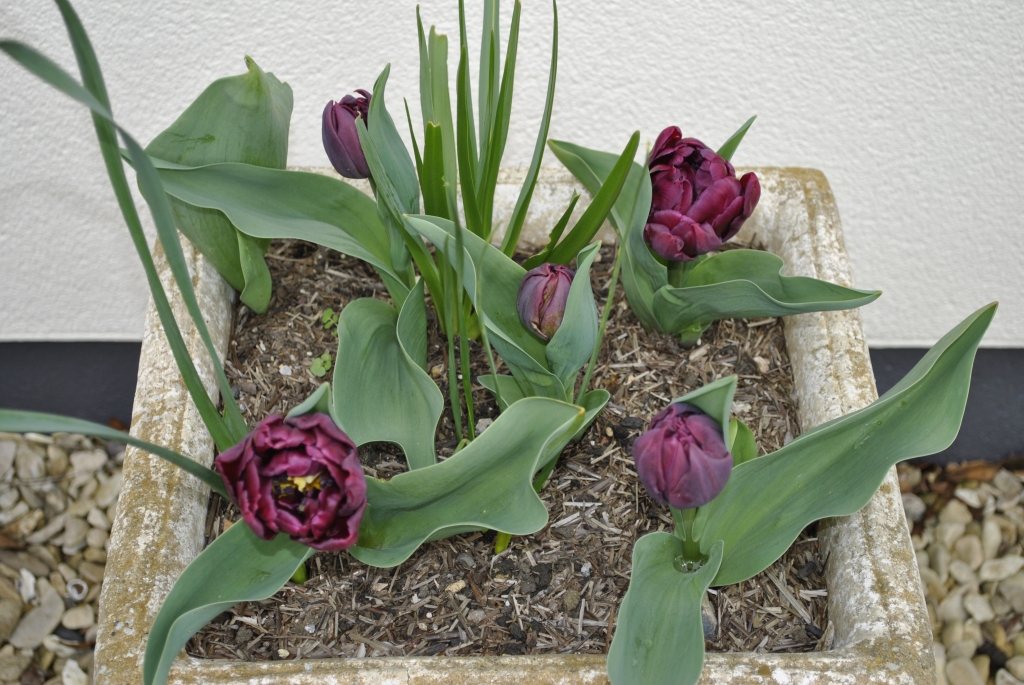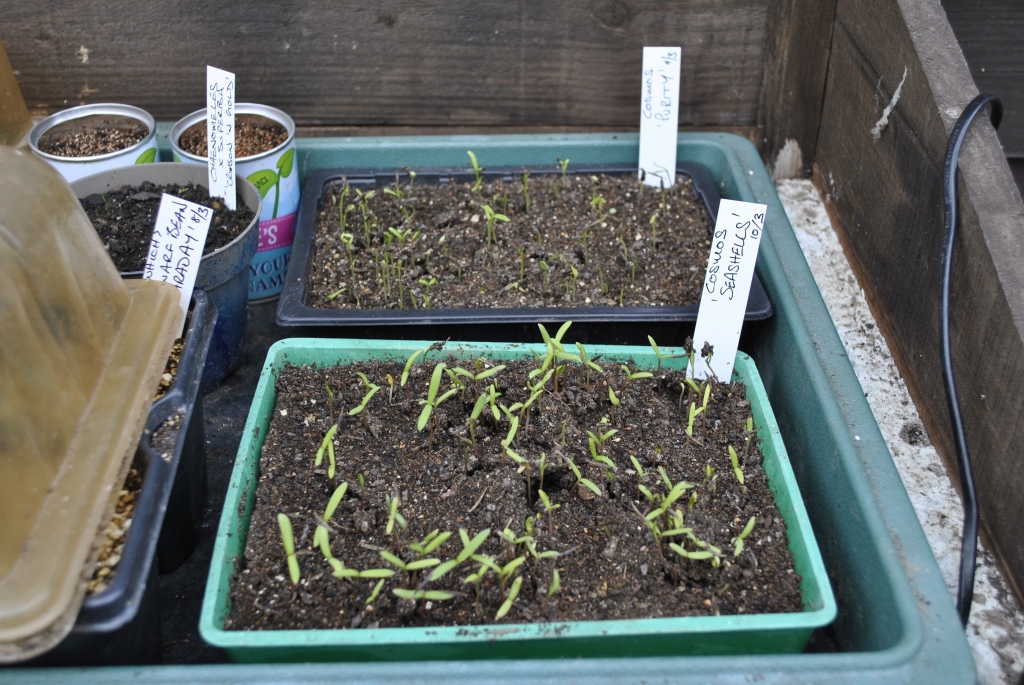
My Six on Saturday blogs have recently been interrupted by illness and holidays (in that order!) and on my return I was laser focused on getting the rose garden in shape. I foolishly (as it turned out) spread my own compost over the beds last year, and paid the price in millions of weeds. I also succumbed to my tendency to overplant, and stuffed every available space with herbaceous perennials, summer flowering bulbs and any spare plants looking for a home. I soon discovered that roses don’t like that. They like and need space and airflow around them, otherwise they sulk and whole stems die off! So, 13 old compost bags full of plants, weeds and detritus have gone to the recycling centre, beds are now weed free, fed and mulched, and looking all the better for it.

There is not much colour in the garden yet, but these little Anemone blanda have spread themselves around and pop up everywhere to compete nicely with the unwanted, and impossible to eradicate, Ficaria verna commonly known as the hated lesser celandine.

The other stalwart of the early Spring garden is the common flowering redcurrant, Ribes sanguineum. This one grows as a ‘full stop’ at the end of a beech hedge and gets a hard prune in August, which as every gardener knows, is far too late, But somehow, it has adapted to to this and rewards me with a good show every February and March. When I walk past, it is buzzing with bumble bees which always brings a smile.

Last October, a kind friend gave me some seeds of Lunaria annua ‘Chedglow’, a rather choice variety of Purple Honesty which begins life with blotchy leaves before they turn a dark shade of purple topped with dark purple flowers. I look forward to seeing it in all its glory next Spring.

The mild winter seems to have confused some of my November planted Tulips! These are not a dwarf variety, nor are they an early variety. They are supposed to be up to 40cm tall and flowering in May!

As usual, I seem to have sown far too many Cosmos in the mistaken belief that, because they are last years seed, the germination rate would be far less. Cosmos, as we all know, does not follow the rules, hasn’t read the packet, and will grow regardless of age!
Right, back to the pressure washing!
Have a great weekend
David








